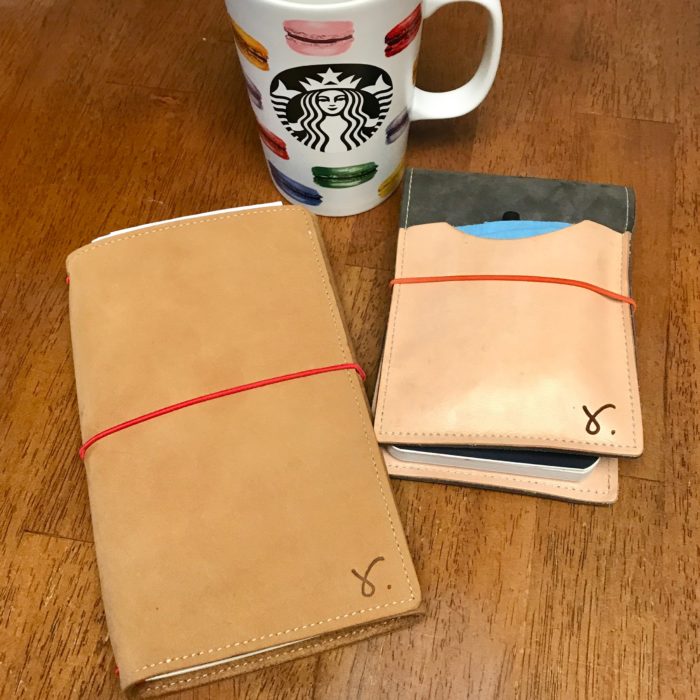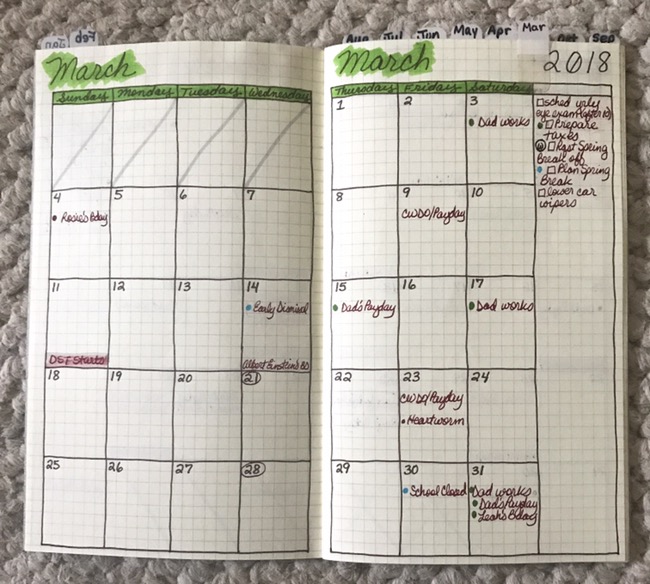In this final installment of this yearly blogpost series, I’m sharing my on-the-go planner! To many this may seem like an unnecessary extra planner to have in your lineup but there are many good reasons to have a portable, curated setup that you can take anywhere. So how did this plannernerd learn how to transition from carrying EVERYTHING in her planner to just the absolute minimum needed?

For starters, let me say: I TOTALLY get it. Last month I shared my work bullet journal setup and primary planner setup which I use to manage personal, family, fitness, finances, and my content (blog/YouTube). I capture, track, and monitor A LOT of information for several different life areas and I wish I could have it ALL with me, everywhere I go—and there was a time when I did. Then I realized something. I didn’t use 95% of it when I was on-the-go. That’s when I decided to really analyze my setup to figure out what I actually NEEDED when on-the-go.
Figuring Out What You Need in Your On-the-Go Planner
The first thing I did was think about what I do on-the-go:
- Attend appointments that sometimes required scheduling a follow-up appointment
- Run errands around town which might involve picking something up or dropping something off
- Go to the bank to make a deposit or withdrawal
- Make payments in person
- Go shopping for various things like clothing, pet supplies, food, household items, planner supplies, etc.
- Meet a friend for lunch
- Go to a merchant for maintenance or service (e.g. car oil change, furbaby’s nails clipped, etc.)
The next thing I did is think about the information I need to complete on-the-go tasks:
- Monthly calendars with existing events and appointments for future planning and scheduling follow-up appointments
- A ‘packing’ list for the day of things I need to take with me
- Receipts, forms, statements, payment slips, printed confirmation/reservations, etc. to complete a transaction
- A shopping list, grouped by store or category
- List of tasks for the day, in the order they need to occur (I map out my route and organize my tasks based on the order I plan to arrive at each location)
- A historical summary of previous events and/or transactions related to an issue I’ll be dealing with while on-the-go

On-the-Go Planner Setup
As a result of my analyzing ‘what I do’ and ‘what I need’, I discovered I either already had something in my setup I could use and then figured out ways to fill in the gaps. As a result, my on-the-go setup contains the following:
- A portable size organizer that is easy to carry in any purse or bag; currently I’m using a B6 slim travelers notebook with pockets to carry any receipts, slips, or papers needed
- A month-on-2-page (MO2P) booklet containing all current events and appointments which I use for scheduling future appointments; this monthly calendar is separate from my primary A5 size planner—the Jibun Techo—which stays at home; these two planners are synced on a weekly basis
- A separate, blank booklet for capturing ideas and notes on-the-go as well as carrying my color-coded, monthly index logs for the year (a summary of important events, transactions, and other things that happened that month for future reference—just quick, brief notes using codes or abbreviations to protect private/confidential information; any details, identifiers, etc. are kept in my primary planner and if I really need it while on-the-go, I’ll take a picture of my primary planner page so it is securely locked in my phone)
- Large and medium size Post-its to use for my ‘packing list’, shopping lists, and on-the-go tasks; the Post-its usually start in my A5 primary planner—since this is what I use throughout my work day and at night—and are eventually transferred to my on-the-go planner on ‘errand day’


Benefits of an On-the-Go Planner
As a die-hard plannernerd, I have two major fears that I’m sure are shared by others in our planner community: (1) getting caught in a situation without the information I need and (2) LOSING my planner and all the critical information stored within it’s covers—aaahhh!!!
There are many benefits to having a separate, trimmed down, on-the-go planner:
- I’m no longer paranoid about traveling with my planner, worrying about it getting destroyed in my bag or a freak accident or—even worse—lost or left behind somewhere
- I no longer worry about someone looking over my shoulder and seeing private or confidential information
- I’m thrilled that I don’t have to lug around or flip thru a big, chunky planner
- I only carry exactly what I need to complete the tasks of the day—I’m not distracted by a weekly layout cluttered with other information from other days
The end result? A much more streamlined, portable planner that I can take anywhere. This on-the-go setup has worked well for me for the past year and I continue to review and adjust as needed. Now, you may be thinking: “What if I’m ‘on-the-go’ for a few days, for example, on vacation?” Well first let me say, you should be focused on relaxing and creating memories with your loved ones and, next, you need even less. Check out my blogpost on my vacation planner setup which describes what I use to manage vacation itineraries, tasks, and expenses in a small, pocket size planner.
So what about you—do you use an on-the-go planner? What is your bare minimum? Do you have any tips or tricks for streamlining the information you need on-the-go? Please share in the comments below and don’t forget to like, share, and subscribe!
Until next time, 🙂
♥ LilD ♥

I have my pocket filofax, which is for me a bit more than an EDC: It is satellite from my main planner, basically with my week, contacts, shopping lists and notes. I also write down my day-to-day expenses. I am also very afraid of losing it, but it comforts me to know that I have a copy of the information at home.
Yesss, Elaine, having a copy is very good! That’s another great way to protect ourselves when using an on-the-go planner. Thanks for sharing!